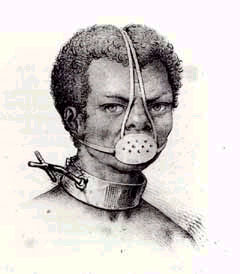Colonialism in Africa

During the 15th and 16th century Europe emerged from the Middle Ages and entered the renaissance a development that encouraged exploration and colonization in many ways.
 Through the White Man’s eyes
Through the White Man’s eyes
When the civilized world began to explore beyond its territory, it came across an unexplored mass of a continent called, Africa. Instantly, the Dark Continent presented its people, who seemed rough, uncivilized and uncultured. And there began the white man’s conquest to civilize them.
Before the explorers set foot in Africa, it was how to innumerous tribes which fought each other to hold their territory. Their unknown ways appeared gruesome to the outsider. They played by simple rules. A person would be enslaved if he was a prisoner of war or committed a crime or was unable to pay his debts in time. The black slave owners would then sell these slaves to the Arabs and Persians. Portuguese and Spanish traders soon brought a new gruesome dimension to this trade.
Shortage of workers
By the end of 15th century, Europeans had discovered the New World which they colonized and settled in. The settlers, often, faced opposition from the natives of the land, whom they defeated easily as they had superior weapons. They enslaved the natives and made them work on the plantations. The natives proved to be poor workers and were prone to diseases that the settlers brought with them. The settlers, now faced with a rising need for plantation workers, began to see Africa as a cheap source for slaves.
Europeans bartered slaves against guns, liquor and products that were produced outside Africa. This exchanged of foreign goods fuelled the ambitious black slave owners to capture and sell more black slaves. Africans were more resistant to European diseases, another factor that propelled steady slave trade across the Atlantic.
Pinnacle of Torture
The Atlantic passage reached its peak in the 17th and 18th centuries, a time when most parts of America were being developed into plantations. Between the mid 15th century and mid 18th century, an estimated 30 million slaves were transported to America.
In an attempt to transport more slaves, their hands and feet were chained giving them no space to move. Slaves were being sent to America in hordes in pitiable conditions. It is estimated that more than half of those who left Africa were fir to work in plantation as the rest either died on the way left crippled.
Ship owners in an effort to capitalize on profits from transportation, divided the hull of the ship into two decks, in order to fit more slaves in the ship. However, while monetary gain were considered the unhygienic conditions led to deaths of slaves during the journey. Often the needs of the slaves were compromised and hundreds were stacked in the ships. Slaves often committed suicide refusing to eat. Slaves who succumbed to diseases or died due to starvation were tossed out in the open sea. Those who survived on the ships lived only to witness more cruelty.
Chattels not humans.
Chattel slavery was a term associated with laborers that were brought from the African continent. They were required in the Southern stated of America as requirement in that region were more. Slaves were often over-worked and left to live in miserable conditions. Poor housing facilities, malnourishment and over-burdening the slaves cut their expectancy short, only a handful lived to be 40. Working long hours in sugar plantations, the under nourished slaves were often masked to prevent them from eating the crop.
Masks prevented slaves working in sugarcane plantations from eating the crop
One-way ticket: Indian Indentured laborers in Trinidad

With the supply of slaves from Africa dwindling and growing pressure to ban slave trade, Europeans supplying slaves to the New World had to look at a new source for laborers. This resulted in what is called the ‘indentured labor’. Poor people from populated colonies like India were promised a new life and taken to work on plantation colonies in Pacific islands, Africa and Caribbean.
Never did these people realize that they would not return to the countries of their birth after they promised five year contract. Little did they understand the contract. The illiterate Indian villagers faced with extreme poverty had little choice when offered what looked like a life line.
On may 30th, 1845, the first batch of laborers from India arrived in Trinidad in the Caribbean islands. Up until 1917, when the practice was banned over 1,40,000 Indians were transported to the island. The journey was long and treacherous, and living conditions were deplorable. The Indians were subjected to abuse, poor food, and dangerous weather conditions.
Though given a face saving term called ‘indentured laborer’, these people were just a few notches above being slaves. These forced immigrants from other countries were enslaved to work rigorously on sugar and coffee plantations. Lakhs of people from India were also taken to other Caribbean inlands, like British Guiana and Jamaica.
During the 19th and early 20th centuries, the British took from India, laborers to work in Malaysia, Mauritius, South Africa, Caribbean and Fiji. Nowhere but in Fiji does the misery of these indentured laborers continue to this day.
Courtesy: Vijay Times.


0 comments
Comments will appear after approval.